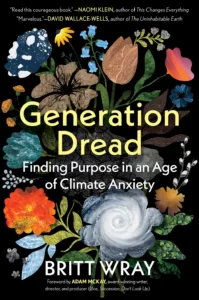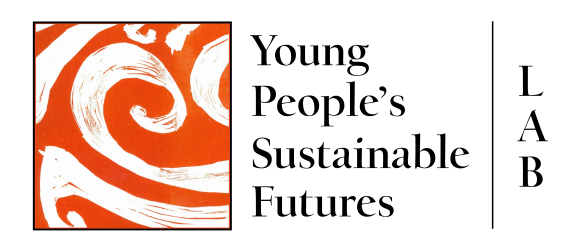
In a recent blog, Dithering as the Holocene Collapses: The Legacy We Are Leaving Young People and Future Generations, I reviewed the latest research on the transgression of nine inter-linked earth systems boundaries as a consequence of the extractive, exploitative and profit driven actions of capitalism (as an earth system – the Capitalocene) over the last 200-400 years. I also examined the consequences of these transgressions for planetary bio-diversity and for the more-or-less stable climatic conditions that have characterised the last 10,000 years (the Holocene), and why young people are angry at the dithering and inaction by adults and their institutions over the last 40 to 50 years in the face of the evidence of these crises:
But here we are: what could have been just a passing crisis has turned into a profound alteration of our relation to the world. It seems as though we have become the people who could have acted thirty or forty years ago – and who did nothing, or far too little. Bruno Latour (2017, 9) Facing Gaia
In this blog, I want to discuss a recent article in the Los Angeles Review of Books (LARB) by Mikkel Krause Frantzen, an associate professor in environmental aesthetics at the University of Copenhagen, and a Humboldt Fellow at Humboldt University in Berlin.
In that article – Endgame Emotions: The Melting of Time, the Mourning of the World – Frantzen explores a range of emotional responses that he identifies as being possible, even widespread, in the context of individual and collective mourning for the things – species, climate conditions, eco-systems, biomes – that we are losing, or are at risk of losing, as the Holocene collapses.
He also references the sorts of generational anger and emotional responses that many young people are experiencing and evidencing in what he calls the ‘…climate endgame of the historical present…’:
Yet if climate change accumulates in our bodies, it accumulates in our minds and brains too, and in our nervous systems. It sediments as a generational experience. One study, published in Lancet Planet Health in December 2021, found that 59 percent of young people between the ages of 16 and 25 were very or extremely worried about climate change. Generation Dread,* it has been called.
This is Not Normal! Cascading Feedback Loops

Franzen’s opening is familiar in-so-much as he flags the increasing litany of climate crisis events, events that in the relative stability of the Holocene had been calculated – by the global insurance and re-insurance industries – as once in a decade/hundred/thousand-year events:
EVERY SUMMER IS a déjà vu, only worse. Remember the summer of 2018? Or the summer of 2023: at the beginning of June, New York City had the worst air quality of any city on Earth, as smoke from wildfires in Canadian forests blew south…
…Remember last year? There were droughts in most of Europe, at the horn of Africa, in Mexico, and throughout the United States (the Colorado River experienced the worst drought in 1,200 years). The biggest news story of the summer of 2022, however, was Pakistan, where floods caused by an extreme heat wave and a long monsoon swept through the country, resulting in devastating losses and a national emergency. Natural it was not.
In these contexts, there is often a reference to what came before as ‘normal’, and what we are now witnessing and dealing with as the ‘new normal’:
But this is not normal, nor is it, as many newspapers and experts would have it, a new normal. Why? Because we are dealing with cumulative effects, so conditions will still get worse from here—even long after the level of global emissions of CO2 reaches zero, if that ever happens (a big if).
As I discussed in the Dithering as the Holocene Collapses, we have to understand the transgression of planetary system boundaries in non-linear ways, in ways that highlight the possibilities of cascading, out-of-control, ‘exponential’ processes triggered by the crossing of these boundaries. Here, Franzten cites three very different sources from three different genres to make a point about the possibilities of cascading climate crisis feedback loops.
The first is a 2022 article by Luke Kemp and his colleagues – Climate Endgame: Exploring Catastrophic Climate Change Scenarios – that evidences how ‘…climate change feedbacks, known and unknown, may in the very worst case “amplify to an irreversible transition into a ‘Hothouse Earth’ state”…’
The second is the opening chapter in the climate fiction (cli-fi) author Kim Stanley Robinson’s 2020 novel The Ministry for The Future, in which ‘…the combination of high temperature and high humidity (the so-called wet-bulb temperature) causes mass death on a gargantuan scale’ in the very near future in an extreme heat event in India.
The third is the report by the Working Group II (WG II) of the Intergovernmental Panel on Climate Change (IPCC) – Climate Change 2022: Impacts, Adaptation and Vulnerability. In canvassing similar concerns, the WG II observes, in the understated way that is so characteristic of prudent science:
Challenges…include the degree to which time is running out, there is no central authority, those seeking the solutions are also causing the problem, and the present is favoured over the future.
As Frantzen (and Kemp et al) ask:
“How bad could climate change get?”…The answer: Really bad, unimaginably bad (even for a writer of science fiction).
The Privilege of Mourning and Loss in the Anthropocene?
In suggesting that we are ‘…living through a period of ruin and rage. Or, in the vernacular of the IPCC, a time of “loss and damage”…’, Frantzen observes that:
when we are dealing with images of climate change, these are almost invariably images of loss: loss of land; loss of nature; loss of species; loss of life, human and nonhuman. Because we are dealing with loss, we are also dealing with grief. The ecological condition is one of mourning.
It is the images and realities of loss, the emotional affects of these losses, and what these emotions, this mourning, means for what we might do in the face of these cascading crises that are the main interests for Franzten.
Citing Joshua Trey Barnett’s (2022) Mourning in the Anthropocene: Ecological Grief and Earthly Coexistence, Frantzen observes that loss and grief and mourning are, in different ways and in different places, a marker of the human condition:
To live is to lose, one might say. Grief is a function of life…
But there is loss, and then there is loss. There are the losses that are “natural” and necessary, inherent to the circle of life.
And then there are the losses that are not—losses inherent to the capitalist machine of extraction, exploitation, and exhaustion of all possible human and nonhuman resources.
These are the losses that did not need to be:
Losses that could be avoided, or could have been avoided. For, in many instances, especially with regards to the biodiversity crisis and the sixth mass extinction, it is already too late. The losses have already occurred, and they are irreversible. But they need not have happened. So many species did not die a so-called natural death. These are the losses we are dealing with here, the losses that we mourn.
But in making this observation that to live is to experience loss, that to live is to grieve and mourn for that loss, Frantzen reminds us, or possibly provokes us, to consider that while the experience of loss and grief might be part of the human condition:
this grief is not universal. People do not lose in the same way; they do not mourn in the same way. Obviously, this is not the first time in history that unfathomable losses have occurred, nor is the feeling new that an ending has been reached.
Citing a number of authors, including Claudia Rankine’s 2015 essay The Condition of Black Life Is One of Mourning, Frantzen suggests that for:
some Black and Indigenous cultures and communities…it all feels like déjà vu: such communities have already experienced the end of the(ir) world before, by way of the oppression and dispossession of settler colonialism, the transatlantic slave trade, and/or genocidal capitalism.
It is in this sense that we must continue to acknowledge the differences and privileges that shape what we imagine we are losing, and our sense of grief and mourning as we become aware of these losses:
There is no question that white people in the Global North are in that sense very late to the party. We are not in the same proverbial boat, nor, in a certain sense, living on the same planet…
Beyond Loss and Mourning?
My interest in this blog is to use Frantzen’s essay to highlight the emotional costs, the senses of loss, and the processes of mourning that appear to be emerging and or widespread among young people. Both in terms of what is already lost and/or disappearing, and in the pre-emptive anxiety and mourning for what the future holds for humans, the more-than-human, and the biodiversity that currently characterises life on the planet. As Frantzen argues, ‘grieving climate change is complicated’:
The problem, then, with ecological grief is that the losses of climate change are unfolding, unfurling; it is a loss without permanence, which makes the process harder but also more hopeful in a way, because you haven’t lost everything yet, there’s still something left. Something that you are about to lose, may still lose, but that is not a given, the loss not complete, and the process not irreversible, though it may be very close to being so.
It is here that Frantzen’s ideas intersect with the work we have been doing at the YPSFL in relation to what we and others identify as a ‘radical politics of hope’:
This is where grief comes into contact, however tangentially, with hope. Because all is not lost, there is still something left. At the risk of oversimplifying a process that is both dialectical and complex, you start with grief, mourning what’s lost—and then comes rage, fighting for what’s left. Fighting against dystopia, fighting for utopia.
In the projects we have been working on in recent years, our engagements with young people suggest that many are looking for productive ways to be active in meeting the challenges in their communities and the world. Many are frustrated, even angry, with what they see as adult inactivity or indifference. At the same time, many young people don’t see themselves as stakeholders in their own futures.
In a recent paper we suggested that, following Rosi Braidotti (2013, p.192), a politics of hope emerges in our imagining of the future as “an active object of desire”, an object that “propels us forth and motivates us to be active in the here and now”. In this sense, hope can be conceived as an “anticipatory virtue that permeates our lives and activates them”. The anticipatory and active dimensions of this politics are animated and guided by an affirmative ‘posthuman ethics’ (Braidotti 2013). Here, the entanglements between the human and more-than-human, the materiality, vitality and immanence of life and death, and an acknowledgement of the profound inequalities and injustices that characterise the convergence of the 4th Industrial Revolution and the 6th Mass Extinction (Braidotti 2019) impel us to tell ethically disruptive stories about these futures.
*Generation Dread: A Postscript

Generation Dread is both a Substack newsletter and a recently published book by Britt Wray, the Director of the Special Initiative of the Chair on Climate Change and Mental Health in the Department of Psychiatry and Behavioral Sciences of Stanford Medicine.
Wray’s Substack and book provide access to a range of ways of thinking and various resources that might be used in different contexts in working with and for young people in the context of the collapse of the Holocene. Not to deny the loss, mourning, anxiety and dread experienced by young people. But to provide frameworks in which intergenerational entanglements between the young and the older can respond to the ‘…climate endgame of the historical present…’.
